Proof of vedic influence all over world
|
A typical ancient Vedic brass lamp from Saudi Arabia. Again it is a sign of the Vedic influence that was and still is found in the Middle East and Arabia. Such lamps are still used in India today. Stories of Allauddin, or Aladdin, and His Lamp come from ancient Vedic India, although many give credit to Arabia.
|
|||||
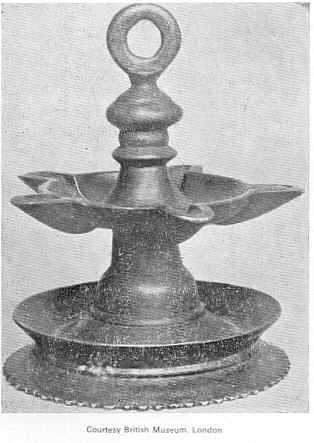 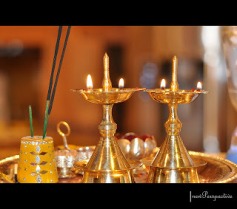
|
|||||
| This image from pre-Islamic Saudi Arabia, displayed at the British Museum, shows goddessSarasvati riding a swan carrier. | |||||
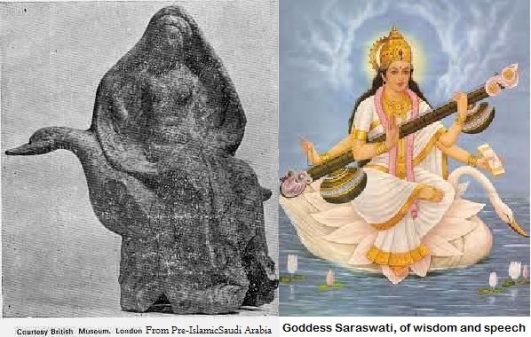 |
|||||
|
If one looks, a person can find reminders of the ancient Vedic culture in numerous places, even where you least expect. Here for example is an image that is very much like the Vedic Lord Shiva. It is said to be the Roman God Neptune, found in Bologna, Italy on a public fountain. Notice the trident on this statue of Neptune, typical of Shiva. The trident was always an emblem of Lord Shiva. Neptune is also seen here standing on an entity in which case Shiva is also seen at times standing on the being of ignorance, illusion, or maya, showing that he is not affected by the power of the illusory energy. Shiva’s foot that presses down symbolizes tirobhava, or the veiling effect; and the uplifted foot means blessings (anugraha), especially toward seeing through the veil of illusion caused by ego, whichh is personified by the entity under Shiva’s foot. Also here, Neptune’s hand is raised in a calming gesture, and when Shiva’s hand is raised it signifies abhaya orgiving blessings and represents sthiti, or preservation and protection. Thus, anyone familiar with Vedic culture will realize that he is styled in a similar way to Lord Shiva. This shows how the impressions of Vedic culture and its gods came from India, though styles and names may have changed as it traveled west. Images resembling Ganesh, Shiva, Rama and Krishna have been found in many archeological excavations throughout Italy, although not publicized by Christians.
|
|||||
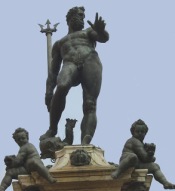 |
 |
||||
| An Arab woman wearing the Hindu vermilion mark on her forehead in ancient times when the world practiced Hinduism. (Published in the Bible Dictionary (appended to the Holy Bible edited by the American Review Committee) and also in “Long Missing Links” by Aiyangar. [ Long missing links, or, The Marvellous Discoveries about the Aryans, Jesus Christ and Allah” by Vaduvur K Duraiswami Ayyangar, Publisher: Oriental Home University, 1931]) | |||||
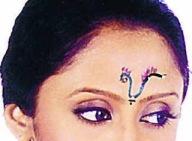 |
|||||
| Hindu administrations, the Sanskrit language, Hindu culture and the Hindu medical system–Ayurved, held sway throughout the ancient world. Monarchs then used to attend court bare-bodied with sacred ash and colour marks on their bodies. This is an Hindu Egyptian monarch of those times. [The ‘V’ mark is called tilok, and is shown being worn by this Egyptian in the same style that it is still worn by Vaishnavas today in India, on the forehead, arms, neck, chest and belly, representing that one is a worshiper of Lord Krishna or Vishnu.] (Published on page 38 of the Bible Dictionary {appended to the Holy Bible edited by the American Review Committee} and on page 185 of “Long Missing Links” by Aiyangar.) | |||||
 |
|||||
| The Hindu architect of the pyramids looking at an unfolded architectural scroll. He is wearing Hindu marks on his body. This should underline the need to reconstruct the worldwide sway of Hinduism in ancient times currently wiped out of all history. (Published in Egyptian Myth and Legends page 368 and also in “Long Missing Links” by Aiyangar.) | |||||
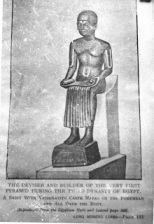 |
|||||
| Bulls were worshipped in ancient Hindu Egypt as they are still worshipped in Hindu India. The earliest explorers of Europe and Africa were Hindus. The river ‘Nile’ bears the Sanskrit name indicating her blue waters. (Published in “Egyptian Myth and Legend” page 70 and “Long Missing Links” page 233.) | |||||
 |
 |
||||
| This mosaic captioned “A Pastoral Scene” is of the 2nd century A.D. and is on display at the museum in Corinth, 60 Km. from Athens (Greece). Obviously this is Lord Krishna the Hindu incarnation in his boyhood. The bare body, the horizontal flute, the cross-legged stance, standing under a tree with a few cows grazing around is exactly how Krishna is depicted in Hindu pictures. This is proof that in ancient Hindu Europe, Krishna and Rama as much as the Shiva Linga were worshipped as they are still worshipped by the Hindus in Hindusthan. | |||||
 |
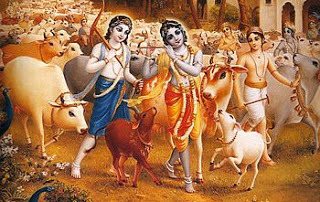 |
||||
| Roman consul wearing the Hindu forehead mark indicating that in ancient times Romans were Hindus. Roman emperors also sported the title ‘Dev’ as the termination of their names in the Hindu royal style. [The ‘V’ mark is called tilok, and is worn on the forehead to represent that one is a Vaishnava, a worshiper of Lord Krishna or Vishnu.] (Published in “History of Rome” page 237 by Smith and in “Long Missing Links” by Aiyangar.) | |||||
 |
|||||
| A Roman superior wearing the Hindu dhoti, chappals (sandals) and Hindu marks on his neck and forehead–reminding one of the times when Europe practiced Hinduism. (Published in “History of Rome” page 300 by Smith and “Long Missing Links” by Aiyangar.) | |||||
| Vali and Sugreeva–two monkey chiefs disputing over a woman Tara whom both claim as wife. Being monkeys they are undressed. This is one of the many Ramayanic scenes found sketched in ancient Italian homes (this one is sketched on a vase discovered in archaeological excavations in Italy). | |||||
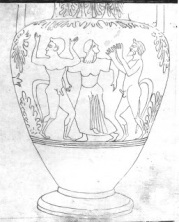 |
|||||
| Rama-Seeta-Lakshmana walking through the forest in the order described in the Ramayana, a scene delineated in ancient Italian homes. Italian archaeologists express bewilderment at these paintings because they are unaware that ancient Europe including Italy practiced Hinduism. | |||||
 |
|||||
| [Top Photo] Three Hindu gods. The one at the left known as Ayu Devata (God of life) is still invoked in Siberia if some near and dear one falls seriously ill. The other two are just samples of the many gods and goddesses sold in the bazar of Ulan Bator, the capital of Mongolia. These indicate how Hinduism prevailed in the ancient world. Even the Slav people in Europe worshipped Hindu deities.[Bottom photo] A Ramayanic scene found painted in ancient Italian houses discovered in archaeological excavations. Kausalya, Kaikeyi and Sumitra, wives of the aged king Dasharath sharing the divine fertility potion to beget illustrious sons. The Dasharath legend is also part of ancient Egyptian lore. All this shows that countries of Europe and Africa were Hindu in ancient times. | |||||
 |
|||||
| This is the Hindu deity Shiva. This piece is at present on view in the Etruscan Museum at the Vatican in Rome. Encyclopedia Britannica mentions under the headings “Etruria” and “Etruscan” that between the 2nd and 7th centuries BC, northern Italy was known as Etruria. During excavations many such “meteoric stones mounted on carved pedestals” are discovered in Italy. Obviously, therefore, this one was dug up from the Vatican itself. Many more must be lying buried in the Vatican’s massive walls and numerous cellars. Vatican is itself the Sanskrit word “Vatica” applied to Hindu cultural-cum-religious centers as in “Ashrama-Vatica” or “Dharma-Vatica” or “Ananda-Vatica.” Therefore, the Vatican was obviously a Hindu religious seat before its incumbent was forced to accept Christianity. | |||||
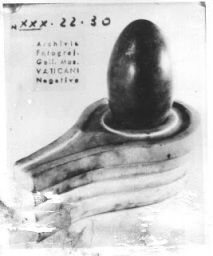 |
|||||
| The British coronation chair in Westminster Abbey in London. It has lions at its four legs. (Only two front ones are seen in this photo.) This is because England’s royal tradition is of Hindu origin. A Hindu king has to be crowned on a Simhasana, i.e. a Lion’s Seat. The almond-colored square stone (seen in the shelf under the seat) is an ancient Hindu memento carried from Delhi, i.e. Indraprastha by Hindu warriors when they first set up throne in the distant British isles. [The following is a different caption under a replica copy of the same photograph in the album.] It is no coincidence that this coronation chair of British royalty in Westminster Abbey, London, is literally a Lion’s seat (simhasan) as it is called in Hindu tradition. A cutpiece of an ancient Shiva Lingam serving several vicissitudes may also be seen reverently placed in the compartment under the royal seat. The sacred stone is known as the Stone of Destiny (Bhagyavidhata) alias stone of Scone (because it was brought from a church in the city of Scone in Scotland, to London in 1296 A.D.). But before being brought to Scotland, it was at the Hill of Tara (Taragarh) in Ireland. Thus, these two, i.e. the Simhasan & Shiva Lingam reaching back into immemorial antiquity, are significant proof of Britain having once been a Hindu country ruled by Hindu Kings. The lions are also of the Burmese and Mysorean Hindu design. |
|||||
  |
|||||
| An Australian bushman wearing the Hindu sandal mark on his forehead in ancient times when the world practised Hinduism. A bell bearing Tamil inscriptions once formed part of an Australian fisherman’s catch. The vast expanse of water from the Americas to Australia, is known as the Indian Ocean precisely because the Indian fleet held unchallenged sway over it. The word ‘navy’ is itself the Sanskrit word “Navi” signifying boats. (Published in “Manual of Geography” page 55 and in “Long Missing Links” by Aiyangar.) | |||||
 |
|||||
| This is the cover of a 16th century book titled “The Cosmos and its Mathematical Study by the Persian author Mohamed-al-Tusi. It is found in the Egyptian National Library, Cairo. The multi-armed deity (holding a book or Vedas, an axe, drum, bunch of incense sticks, a lotus bud and a mouse) and the hexagonal platform on which he sits, certainly shows the Vedic influence. | |||||
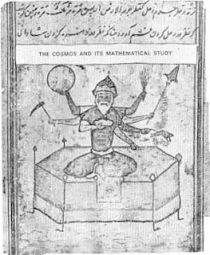 |
 |
||||
From the British Museum, London, we find this inscription tablet from pre-Islamic Arabia. The crescent and sun on top relate to the Vedic dictum “Yawachchandra Diwakarau,” which signifies that the gift mentioned in the inscription should last as long as the sun and moon. This crescent and sun is a Vedic symbol, which still can be seen in use on the flags which adorn the top of the temple of Lord Jagannatha in Jagannatha Puri, as well as on coins in Hindu Nepal. This symbol is in reference to the idea that it is Lord Vishnu who is the source of the light for the sun and the moon. Thus, this symbol which also adorns Islamic flags shows its Vedic influence.
|
|||||
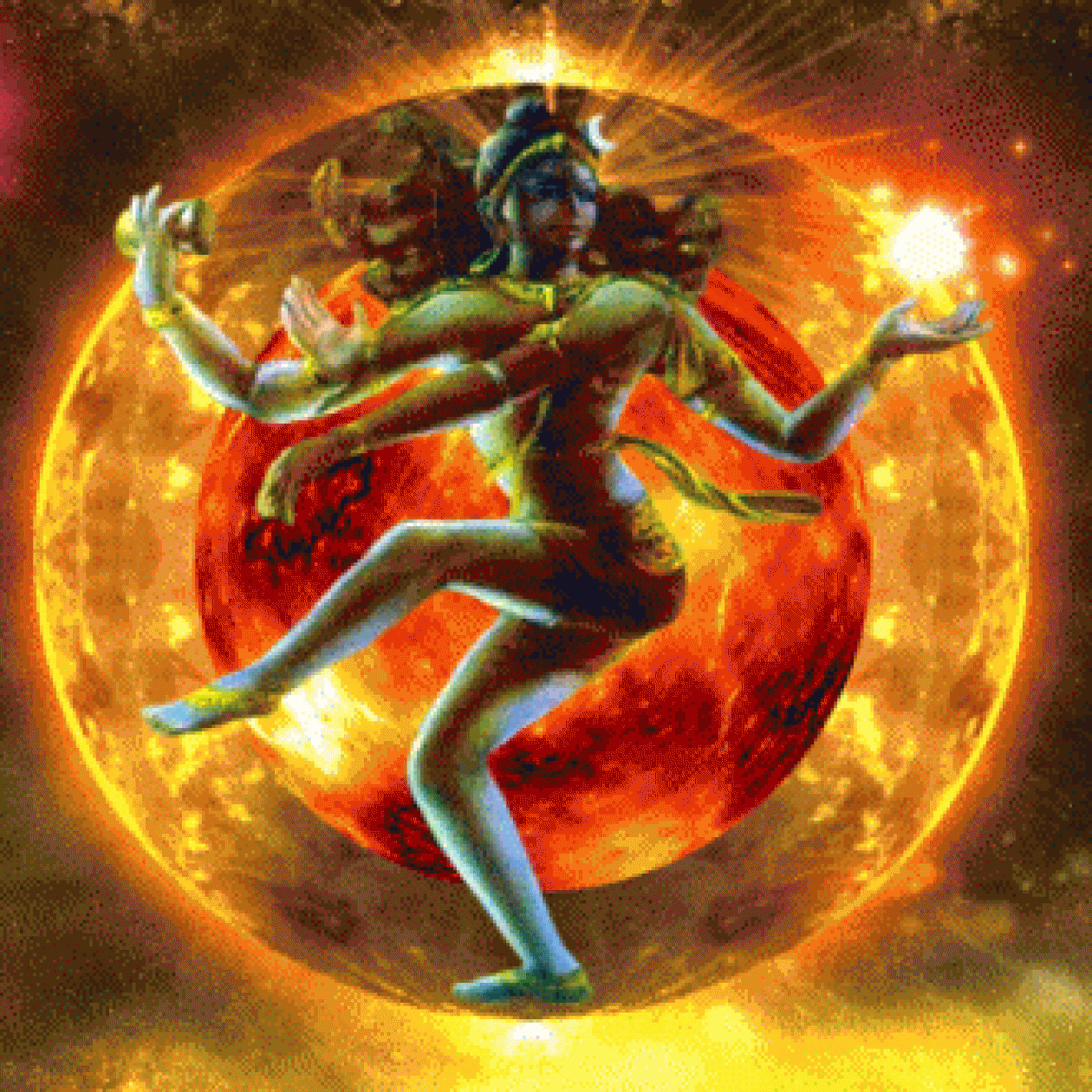
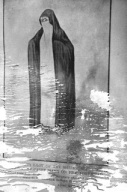
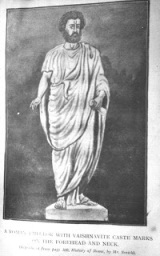








These findings are great and must be advertise and marketing in among Hindus everywhere.
LikeLike
Reblogged this on Voice of world.
LikeLike
I beg ur pardon.the Brahma which u pointed above is not brahma.he is Vishwakarma who have the globe in his right hand.lok
LikeLike
The idol of Ayu Devata ( God of Life), one of the Three Hindu Gods is of Buddha and not of any Hindu Gods, Verify this and make correction here.
LikeLike